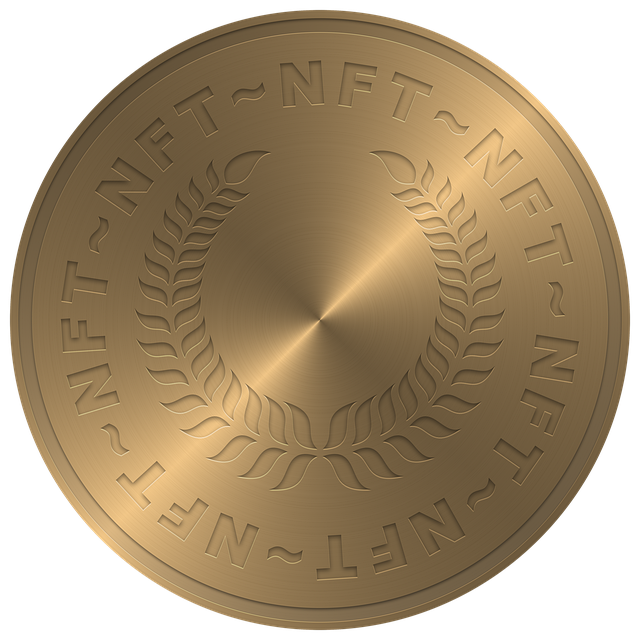What Are the Best Crypto Trading Bots in 2025
Author: Jameson Richman Expert
Published On: 2025-11-11
Prepared by Jameson Richman and our team of experts with over a decade of experience in cryptocurrency and digital asset analysis. Learn more about us.
What are the best crypto trading bots is a question every active trader asks when seeking to automate strategies, improve execution, and free time. This article answers that question by comparing leading bots, explaining strategy types (arbitrage, grid, market-making, trend-following, signals, copy trading), detailing selection criteria, and giving actionable setup, security and risk-management steps. You’ll also find links to strategy resources, tracking tools, and exchanges so you can test and deploy bots responsibly.

Why traders use crypto trading bots
Automated trading software executes pre-programmed rules with speed and consistency impossible for manual traders. Bots help with:
- 24/7 market monitoring and execution across time zones
- Faster reaction to market signals and order book dynamics
- Backtesting strategies against historical data
- Reducing emotional errors and discipline slip-ups
- Implementing complex strategies like market-making and triangular arbitrage
Before selecting a bot, understand your objectives: passive income (grid), active alpha (market-making), hedging (delta-neutral), or following expert signals (copy trading). Each bot excels in different contexts.
How to evaluate a crypto trading bot
Use these criteria to compare bots and avoid common pitfalls:
- Supported exchanges and API integration — Check for your primary exchange (e.g., Binance, Bybit, Bitget, MEXC). If your exchange is unsupported, the bot is likely unusable. Review API permission controls and read exchange docs like the official Binance API docs or Bybit API pages. For general background on exchanges and APIs, see the Cryptocurrency exchange – Wikipedia and API – Wikipedia.
- Strategy library and customization — Does the bot offer built-in strategies (grid, DCA, scalping, arbitrage) and allow custom scripting or indicators?
- Backtesting and simulation — Robust backtesting with realistic slippage and fee modeling is essential.
- Security and custody model — Does the bot require withdrawal permissions? Prefer API-key-only access with trade and read permissions, and IP whitelisting.
- Latency and reliability — Execution speed matters for scalping and arbitrage strategies.
- Transparency and reputation — Look for documented performance, independent reviews, and a responsive support team.
- Cost and fee structure — Consider subscription fees, profit-sharing, and hidden exchange costs.
- Community and educational resources — Active communities and good documentation accelerate learning and troubleshooting.
Top crypto trading bots: overview and who they suit
Below are popular bots grouped by use-case and user level. This is not financial advice—do your own testing and risk assessment.
1) 3Commas — Balanced, beginner to advanced
3Commas is known for an intuitive UI, smart trading (trailing take-profit/loss), composite bots, and copy trading. It integrates with major exchanges (Binance, Bybit, Bitget, etc.) and has a marketplace of user-created strategies.
- Best for: Traders wanting assisted automation and copy-trading features.
- Pros: User-friendly, strong strategy marketplace, good mobile app.
- Cons: Subscription fees; advanced strategies may be limited compared to code-based bots.
2) Cryptohopper — Signals and marketplace focus
Cryptohopper emphasizes signal integration (third-party or in-house), a marketplace, and easy templates. It supports trail features and backtesting.
- Best for: Signal followers and traders seeking an easy entry to automation.
- Pros: Large signal marketplace, cloud-based (no local server), beginner-friendly.
- Cons: Signal quality varies; marketplace fees may add up.
3) Pionex — Built-in exchange with free bots
Pionex is an exchange that offers built-in bots (grid, DCA, arbitrage) directly on the platform. Because bots run on-exchange, there’s no API setup or withdrawal risks from third-party services.
- Best for: Low-cost automation and grid traders.
- Pros: Low trading fees, free built-in bots, easy to start.
- Cons: Limited to Pionex exchange features and assets.
4) Bitsgap — Arbitrage and portfolio tools
Bitsgap focuses on signal-based bots, cross-exchange arbitrage, and portfolio management. It allows paper trading to simulate performance.
- Best for: Traders wanting cross-exchange strategies and a unified interface.
- Pros: Cross-exchange support, strong backtesting, demo mode.
- Cons: Monthly fees; complex for beginners.
5) HaasOnline — Advanced and highly customizable
HaasOnline is a professional-grade platform with scripting, advanced technical indicators, and strategy designer tools. It requires more technical skill and self-hosting knowledge.
- Best for: Professional traders and developers wanting deep customization.
- Pros: Powerful, supports complex bots and market-making strategies.
- Cons: Steeper learning curve, higher cost.
6) Gunbot — Scriptable desktop bot
Gunbot is a long-standing, customizable bot that runs on the user’s hardware. It offers a variety of strategies and community-developed add-ons.
- Best for: Tech-savvy traders preferring local execution.
- Pros: Highly configurable, no monthly fee (one-time license).
- Cons: Requires setup and ongoing maintenance; UI is less modern.
7) Zignaly, Shrimpy, and Zignaly — Copy trading and portfolio rebalancing
Platforms like Zignaly and Shrimpy focus on copy trading, social strategies, and portfolio rebalancing. They simplify diversification and passive strategies.
- Best for: Passive investors who want portfolio automation and social signals.
- Pros: Easy to use, integrates with major exchanges, social features.
- Cons: Performance depends on chosen traders and rebalancing cadence.
8) Open-source bots: Gekko, Zenbot, and Freqtrade
Open-source projects like Gekko (no longer actively maintained), Zenbot, and Freqtrade are excellent for developers who want full control and transparency.
- Best for: Developers and traders who want build/test custom strategies.
- Pros: Free, customizable, community-driven.
- Cons: Require programming, self-hosting, and maintenance; security responsibility falls on you.

Matching bots to strategies
Which bot is “best” depends on your strategy:
- Grid trading: Pionex, 3Commas, Bitsgap for managed grid strategies; Freqtrade for custom grids.
- Market making: HaasOnline, custom scripts on Freqtrade, or professional market-making suites.
- Arbitrage: Bitsgap (cross-exchange), custom low-latency solutions for institutional use.
- Trend-following and scalping: 3Commas, Cryptohopper, and bespoke bots tuned for low latency.
- Copy trading: Zignaly, 3Commas, Cryptohopper.
Advanced order book strategies and why they matter
Understanding order book dynamics improves bot performance, especially for market-making and scalping bots. Order book strategies consider liquidity, bid-ask spread, and trade flow. For deeper reading about order-book-based trading approaches, see this resource on advanced order book trading strategies for traders and another practical guide on proven order book trading strategies for modern markets.
Backtesting, simulation, and realistic performance expectations
Backtesting is essential but often misleading if not done properly. Common backtesting mistakes:
- Ignoring slippage and realistic latency
- Omitting exchange fees and taker/maker distinctions
- Overfitting to past data (curve-fitting)
- Not testing across multiple market regimes (bull, bear, sideways)
Use walk-forward analysis and out-of-sample testing. Many platforms (3Commas, Bitsgap, Freqtrade) offer simulation modes. When testing, simulate order book depth and cancellation latency to approximate live conditions.

Risk management and safety best practices
Automation does not remove risk. Implement strict risk controls:
- Set position size limits and per-trade risk caps
- Use stop-loss and trailing stops where appropriate
- Limit API permissions to trading and read-only — never enable withdrawals
- Enable IP whitelisting and 2FA on exchange accounts
- Start with small capital and increase exposure gradually after validating performance
Additionally, ensure you use reputable exchanges. If you need to open an account, here are some major options:
- Register on Binance — large liquidity and extensive API features
- Register on MEXC — wide altcoin listings
- Register on Bitget — derivatives and copy trading features
- Register on Bybit — strong derivatives and margin tools
Operational tips: monitoring, logging, and trade history
Even the best bot can fail due to API changes, exchange outages, or bugs. Operational hygiene includes:
- Enable comprehensive logging for order placement, fills, and errors
- Use monitoring/alerting (SMS, Telegram, email) for critical events
- Regularly reconcile bot trades with exchange trade history
If you use Bitget, tracking and analyzing trade history can improve strategy tuning. See a guide on using trade history tools and apps to track, analyze, and optimize performance: Bitget trade history app: track, analyze, optimize.
Market context: cycles, altcoin season, and timing bots
Market regime matters. Bots that perform well during a trending bull market may underperform in sideways or bear markets. For example, grid bots often shine in high-volatility sideways markets, while trend-following bots excel in sustained uptrends. Understanding when altcoins usually outperform helps align strategies — read about altcoin season duration, signs, and strategies here: How long does the altcoin season last — duration, signs, strategies.

Legal, tax, and ethical considerations
Before running bots, consider legal and ethical responsibilities:
- Tax reporting: Keep detailed trade records. Many jurisdictions treat crypto trades as taxable events. See guidance from your local tax authority or official resources (for U.S. taxpayers: IRS on virtual currencies).
- Regulation: Some strategies (e.g., certain market-making or lending) may trigger regulatory oversight depending on the exchange and jurisdiction.
- Religious/ethical considerations: Traders may ask whether crypto trading is compatible with their beliefs. For example, a jurisprudence-based discussion on trading’s permissibility in Shia Islam is available here: Is crypto trading halal in Shia Islam — a jurisprudence-based practical guide.
Real-world examples and use cases
Example 1 — Grid bot for mean-reverting altcoin:
- Asset: BTC/USDT or an altcoin with sufficient volume
- Range: Define upper and lower price bounds based on recent support/resistance
- Grid spacing: Use percentage spacing (e.g., 0.5–2%) depending on volatility
- Position sizing: Limit capital allocated to single grid to a small percentage of portfolio
Example 2 — Market-making on a low-spread pair:
- Place offset bid/ask orders around mid-price
- Adjust order size based on inventory skew
- Use cancel/replace rates to avoid stale orders in rapid markets
Example 3 — Copy trading for passive income:
- Follow vetted strategy providers with transparent track records
- Diversify across several managers and limit allocation per signal
Common pitfalls and how to avoid them
- Over-optimization: Avoid hyper-fitting to past data. Favor robust, rule-based systems.
- Unrealistic expectations: Bots don’t guarantee profits; drawdowns happen.
- Poor monitoring: Set alerts and check logs proactively.
- Ignoring fees: High-frequency strategies can be eaten by fees and slippage.
- Lack of diversification: Spread risk across markets and strategies.

How to test and deploy a bot (step-by-step)
- Choose strategy and platform: Match your objective to a bot (grid on Pionex; signals on Cryptohopper; custom on Freqtrade).
- Paper trade first: Use demo accounts or sandbox APIs where possible to validate logic.
- Backtest and stress test: Include slippage, fees, and fill rates. Test across multiple market regimes.
- Start small: Deploy with a controlled amount; monitor closely for unexpected behaviors.
- Scale gradually: Increase capital only after consistent performance and stable operation.
- Maintain and update: Track exchange API changes, update the bot, and refine strategies.
Resources for learning and staying up to date
Stay informed with strategy guides, exchange documentation, and community forums. Good resources include:
- Exchange API docs (Binance, Bybit, Bitget)
- Algorithmic trading concepts: Algorithmic trading — Wikipedia
- Official regulatory guidance: e.g., SEC Investor.gov for investor protections
- Advanced strategy write-ups such as the order-book articles linked earlier: advanced order book trading strategies and proven order book trading strategies.
When not to use a bot
Bots are not always appropriate. Avoid automation when:
- Illiquid assets or narrow markets where fills are unreliable
- Large positions that move the market (bots are for execution, not market impact management)
- When you lack ability to monitor and respond to system-critical failures

Checklist: choosing and running the best bot for you
- Define goals: income, alpha, diversification
- Confirm exchange support and API stability
- Verify backtesting and demo features
- Check security model and community reputation
- Start with limited capital and robust monitoring
Conclusion — practical recommendation
So, what are the best crypto trading bots? There isn’t a single answer — the “best” bot depends on your goals, technical skill, asset choice, and market regime. For beginners, cloud-based platforms like 3Commas, Cryptohopper and exchange-native bots (Pionex) provide low-friction entry. Intermediate traders may prefer Bitsgap or Zignaly for cross-exchange features and copy trading. Advanced and professional traders often use HaasOnline, bespoke low-latency systems, or open-source frameworks like Freqtrade to craft complex strategies.
Whatever you choose, prioritize security (read-only API keys, no withdrawals), robust backtesting, and careful risk management. Use the resources cited above to deepen your understanding—explore order book strategies (advanced order book strategies), proven tactic guides (proven strategies for modern markets), altcoin cycle planning (altcoin season duration and strategies), trade-history optimization (Bitget trade history tools), and even jurisprudence views if relevant (religious guidance resource).
If you’re ready to experiment, open accounts on reputable exchanges (Binance, MEXC, Bitget, Bybit) using the registration links above and start with paper trading and small allocations. Automation can be a powerful tool when used with discipline and proper safeguards.
Further reading and references
- Algorithmic trading — Wikipedia
- Cryptocurrency exchanges — Wikipedia
- IRS guidance on virtual currencies
- Order book and strategy guides linked throughout the article: advanced order book trading strategies, proven order book strategies, altcoin season strategies (note: correct link is in article body)